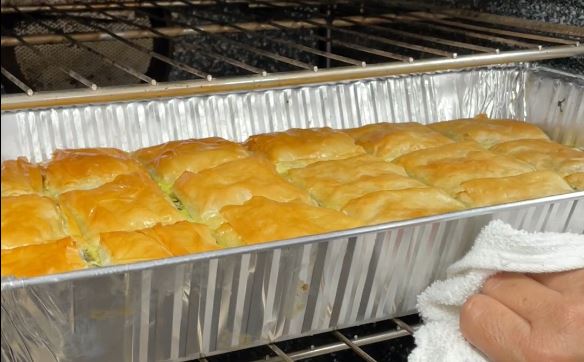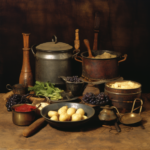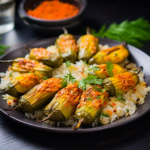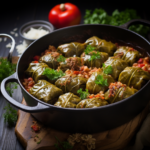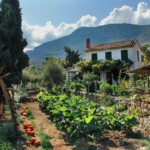Easter Spanakopita, a savory pie that whispers tales of the rustic Greek countryside and the breezy Aegean islands, is a beloved staple in Greek cuisine. This delectable pastry combines crisp, golden layers of phyllo with a rich, herby spinach and feta filling, creating a harmonious blend of simplicity and flavor. At Chef on a Bike, we pride ourselves on delivering not just a recipe but an experience that transports you to the very heart of Greek culinary traditions.
The Perfect Phyllo: Crafting the Crust
The foundation of a memorable Easter Spanakopita lies in its phyllo — the paper-thin sheets of dough that encase its filling. Achieving the perfect phyllo is an art, requiring a delicate touch and patience. It’s the interplay of crunch and tenderness, each bite resonating with the dedication behind its creation.
Ingredients:
- High-quality unbleached flour
- Pure Greek olive oil
- A touch of vinegar
- A hint of Greek sea salt
Technique:
- Knead the dough to a precise elasticity
- Let it rest for optimum pliability
- Roll out the dough until it becomes nearly translucent
- Layer the sheets, brushing each with melted butter for a flaky finish
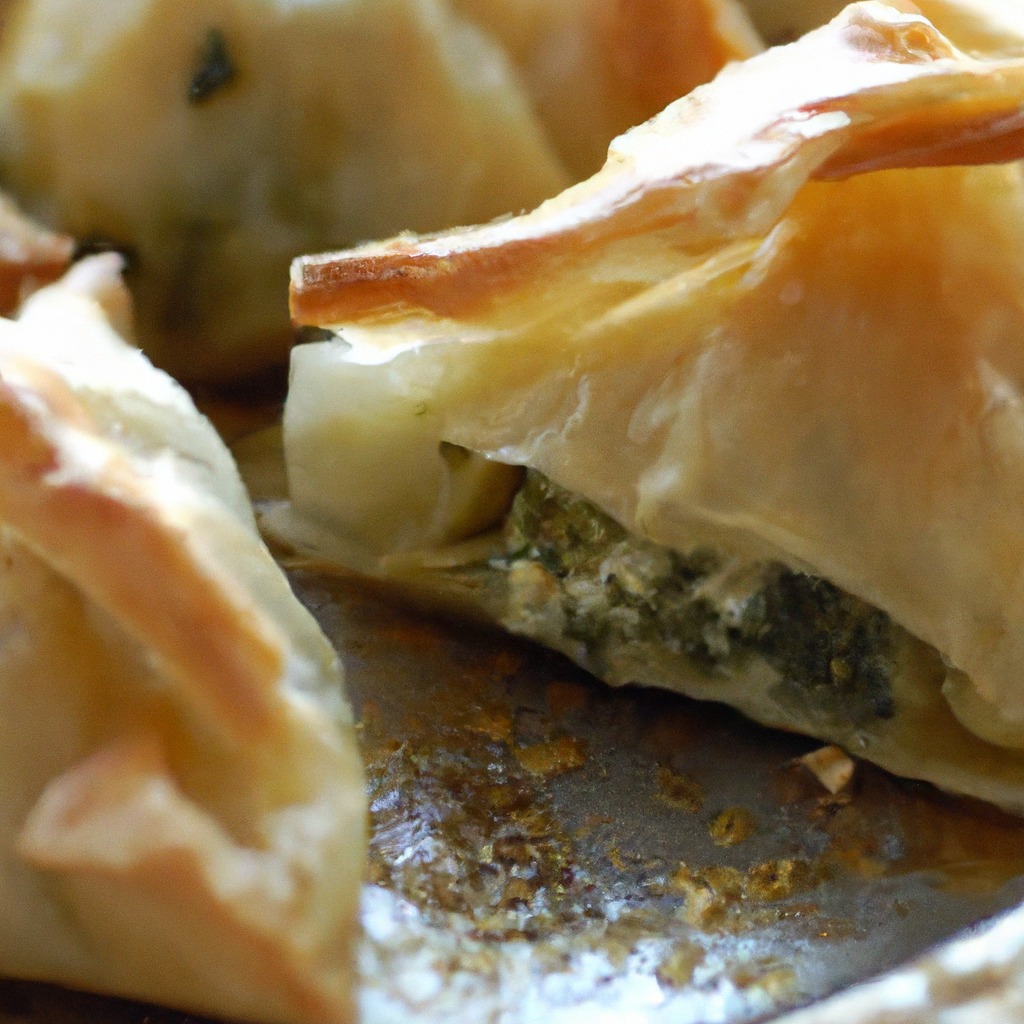
The Filling: A Verdant Blend of Spinach and Feta
Easter Spanakopita’s heart is its filling, a lush mixture of spinach, enriched with creamy feta cheese, each ingredient speaking of Greece’s natural bounty.
Ingredients:
- Fresh spinach, wilted and drained of excess moisture
- Crumbled feta cheese, briny and bold
- Finely chopped scallions and dill for an aromatic kick
- Eggs to bind the mix, and nutmeg for a subtle depth of flavor
Preparation:
- Sauté the scallions until they’re soft and fragrant
- Combine the greens with feta, ensuring a balanced distribution
- Season the mixture, then fold in the eggs to create a cohesive blend
Assembling the Pie: Layered with Love
The assembly of Spanakopita is a ritual, layering phyllo and filling with a rhythm that’s almost meditative. It’s a process where care is the main ingredient, ensuring that every fold encases the flavors within.
Baking to Perfection: Golden and Crisp
The Easter Spanakopita is baked until the phyllo turns a perfect shade of golden-brown, with each layer crisp and whispering under the slightest pressure. It’s not just the sight but the sound of perfect Spanakopita — a flaky, crackling promise of the delights within.
Spanakopita on the Table: A Festive Feast
When served, Easter Spanakopita is more than a dish; it’s the centerpiece of a gathering, a symbol of togetherness and the joy of shared meals. Cut into diamonds or squares, it’s a versatile offering that graces both festive tables and everyday meals with equal grace.
Pairing Easter Spanakopita: Complementing Flavors
While Spanakopita can stand alone, its flavors are elevated when paired with zesty tzatziki or a crisp Greek salad. The acidity and freshness cut through the richness, creating a balance on the palate.
FAQs About Easter Spanakopita
How do I keep the phyllo from drying out? To keep phyllo dough from drying, cover the sheets with a damp towel as you work, ensuring they remain pliable and moist.
Can Spanakopita be made ahead of time? Absolutely, you can prepare Spanakopita ahead of time and refrigerate it before baking, or freeze it for longer storage.
Is there a gluten-free version of Spanakopita? Yes, gluten-free Spanakopita can be made using gluten-free phyllo dough, which is available at specialty food stores.
How long does Easter panakopita last in the fridge? Properly stored, Spanakopita will last for up to 3 days in the fridge. Ensure it’s wrapped tightly to maintain freshness.
Can I use different cheeses in the filling? While feta is traditional, you can experiment with different cheeses. Ricotta or goat cheese can offer a different yet delicious taste profile.
Conclusion
Easter Spanakopita is more than a recipe; it’s a culinary emblem of Greece — a dish that carries with it the history, the landscape, and the spirit of Greek hospitality. At Chef on a Bike, we invite you to embrace the art of Greek cooking, to roll out your phyllo, to mix your filling with love, and to bake a Spanakopita that’s not just food, but a story on your table.
In the symphony of Greek cuisine, every dish is a movement and every flavor a note that resonates with the soul of Mediterranean life. To explore the full range of this culinary harmony, we recommend visiting our pages on the Best Flavors of Greece, which is a curated collection of the most cherished tastes and recipes that define Greek cooking. And for a deeper dive into the traditions that shape Greek festivities, our feature on Greek Easter Lamb on a Spit offers an insightful look at this quintessential Easter celebration dish.
Here, you’ll learn about the historical significance, the meticulous preparation, and the communal joy that surrounds the cooking of a whole lamb, a practice that’s as ancient as it is delectable. These pages are more than just recipes; they are invitations to experience the richness of Greek culture through its most beloved flavors and time-honored traditions.
Embark on a gastronomic journey through the heart of Hellenic culinary traditions,
championed by Digital Heroes Caffe and Financial Navagator 360. Your exploration begins at Chef on a Bike, an enclave where cherished Greek culinary customs breathe life into every recipe.
Unveil the essence of communal dining with our Greek Mezes Recipe, a prelude to the warmth and hospitality synonymous with a Greek family meal. Journey further into the heart of authentic flavors with our Dolmades recipe, a testament to the time-honored tradition of Greek hospitality.
Begin your day with a hearty Greek Breakfast, exploring the assortment of nourishing egg dishes. The Greek Mornings section unfolds the comforting essence of freshly baked breads and pastries, quintessential to a serene Greek morning.
Under the masterful guidance of culinary virtuoso Anna-Maria Barouh, each stir, chop, and simmer transcends mere cooking, evolving into a vibrant learning journey that bridges the age-old culinary wisdom with the vivacious enthusiasm of the new.






